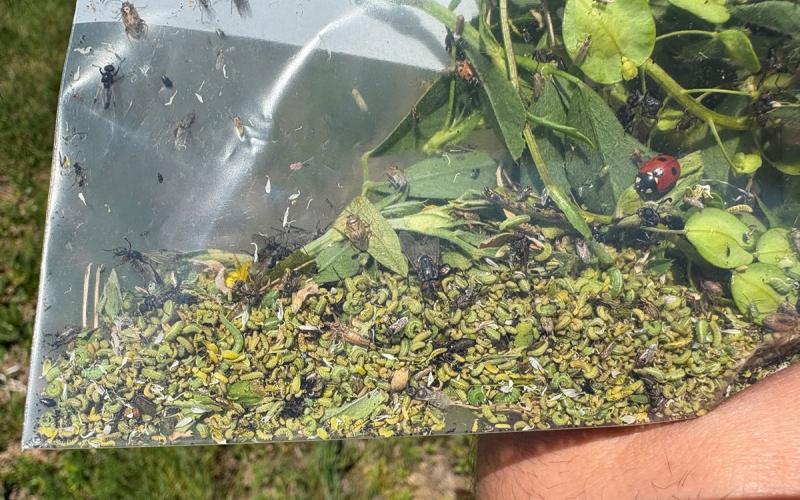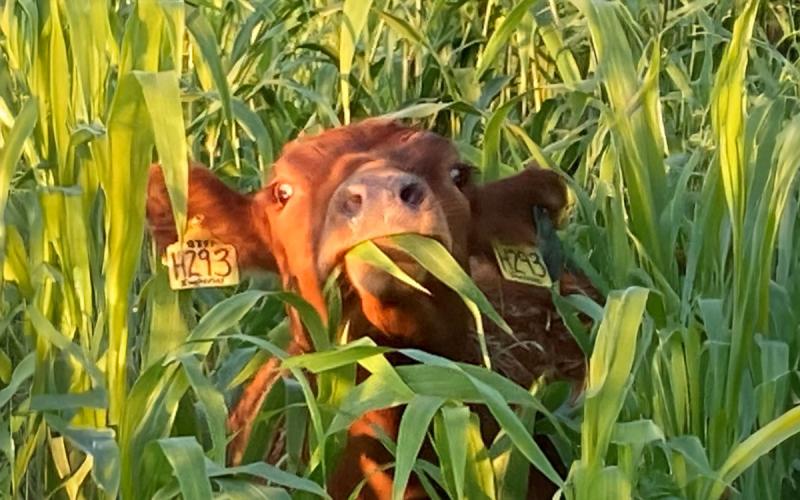
Originally Submitted: May 6, 2021
During the spring, there are several insect pests that can be found in alfalfa fields. One of the earliest insect pests that can be found in South Dakota’s alfalfa fields are army cutworms. There are other cutworm species that will also feed on alfalfa, but the army cutworm is typically the first one to be observed.
Unfortunately, scouting for cutworms can be challenging, as they hide under the soil surface during the day and are more-active at night. For this reason, monitoring spring alfalfa growth is key. Injury from cutworms can sometimes be overlooked until large patches of an alfalfa field have been “cut.” Other cutworm species activity will start to be observed in late-May and June.
Army Cutworm Biology and Identification

The army cutworm overwinters in South Dakota as caterpillars in the soil, which allows them to begin feeding much earlier in the season. Army cutworm caterpillars will become active in the spring when the soil is approximately 40 degrees Fahrenheit. Their activity will increase or decrease based on the high-and-low daily temperatures, but it is important to note that, even during nights with temperatures below freezing, these caterpillars will survive by seeking shelter in the soil.
Army cutworm caterpillars are typically a gray to gray-green color and have lighter patterns, or splotches, on their bodies (Figure 1 and Figure 2). They also have a pale stripe on the center of their back that runs the length of their body. Army cutworms will defoliate plants, and when limited food is available, they may devour the entire plant.
Scouting
To scout for army cutworms in alfalfa, monitor new growth for signs of defoliation. Any delay in green-up may be a sign of cutworm activity. If army cutworms are observed in a field, their population density should be determined by scouting several square-foot areas within the field. Dig the soil in the area and determine the number of army cutworm caterpillars that are present. For newly established alfalfa stands, the threshold for army cutworms is two caterpillars per square foot. For established alfalfa, the threshold is four army cutworm caterpillars per square foot.
Management
Army cutworms can be managed using foliar insecticides that are timed in the late afternoon or evening. Refer to the latest South Dakota Pest Management Guide: Alfalfa and Oilseeds for a list of products that are labeled for cutworm management in alfalfa.
If the alfalfa is going to be destroyed and replanted to another crop, it is important to consider that the cutworms will still be present. Depending on the crop, an in-furrow insecticide may be necessary to prevent cutworm feeding as the new crop emerges.


